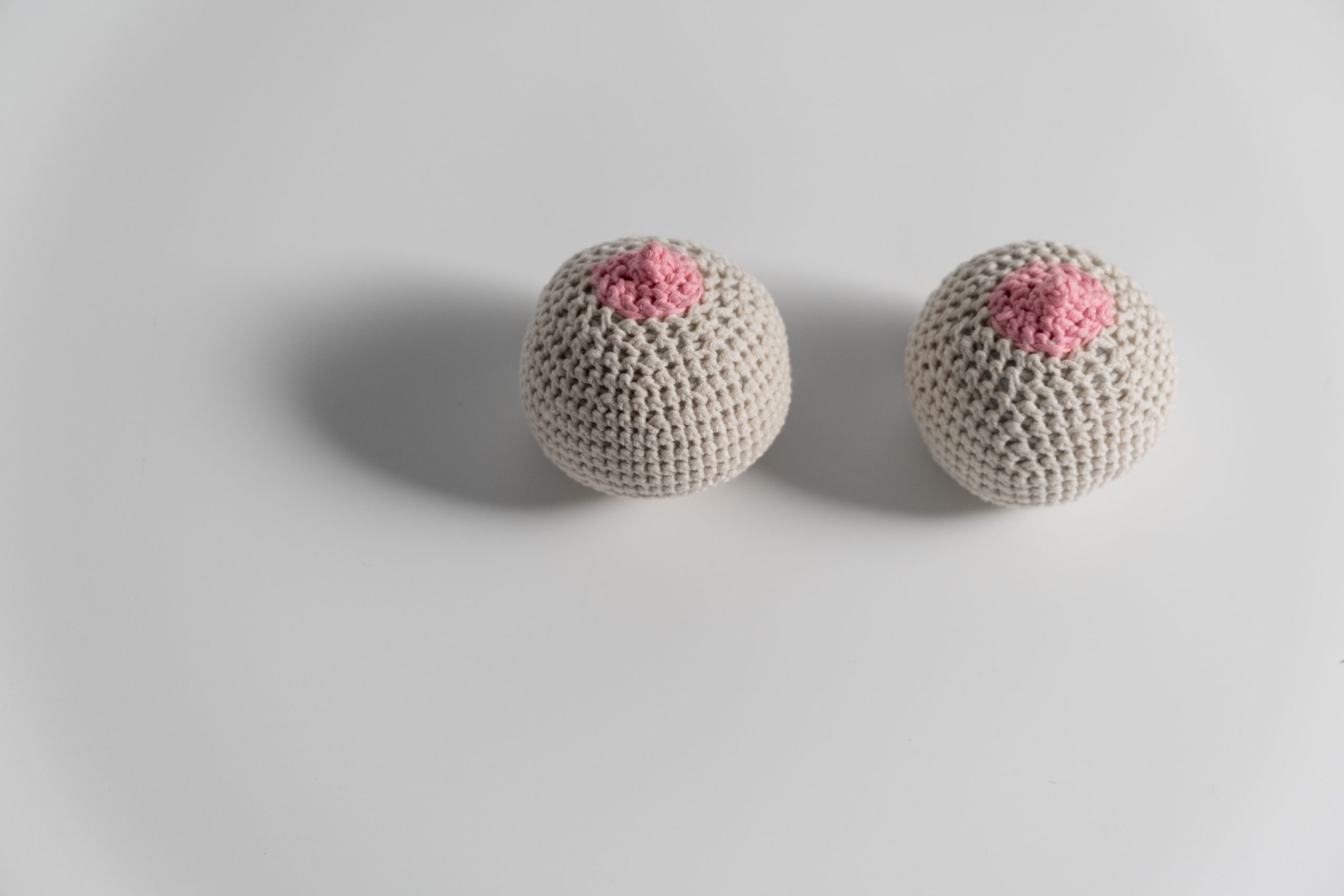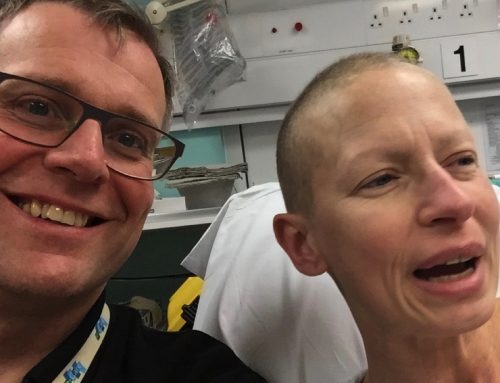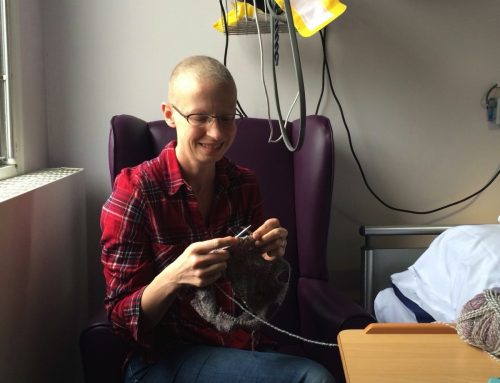Helping a patient decide whether to have a reconstruction following a mastectomy can be incredibly challenging, for a variety of reasons. There are things that the patient can control, and those she can’t. As a breast surgeon, making a decision for myself was a particular challenge.
There are two main types of reconstruction. One is to use an implant to replace the breast tissue. The other is to use a woman’s own tissue, for example, a muscle on her back (LD flap) or inner thigh (TUG flap), or the fat on the lower part of her tummy (DIEP flap), sometimes combined with an implant.
Implants
Implants are less commonly used in women with large breasts, because they can never create the natural ‘droop’ of a large or ageing breast. Breasts all ‘head south for winter’ in time, and an implant never will. Implants tend to give a more natural result in women with an A-C cup. The benefit of an implant is that it’s relatively quick, with a short recovery, compared to using your own tissue. You are often only in hospital for one night, and are back to normal after 2-4 weeks, providing there are no complications. The downside is that it will never look, feel or move like a natural breast. And most women will need implant revision surgery every 5-10 years, to either match the change in shape of their natural breast, or to correct a capsule that can form around the implant and change its shape or cause pain.
If a woman smokes, the vast majority of surgeons will not consider an implant reconstruction , because the skin of the breast often breaks down or fails to heal following surgery, due to the damaged blood vessels in the skin caused by smoking.
Using your own tissue
n order to use your own tissue, you have to have enough to spare. Using your tummy fat is one of the commonest operations, and can produce excellent results, as well as the additional ‘bonus’ of a tummy tuck. Alternatively, using a muscle on your back, often together with an implant, can also produce good results. The problem with these operations is that they take longer to perform (up to 8 hours of operating time in some cases), you are often in hospital for 3-7 days, and the recovery time can be 3-4 months. You also have a second scar site to deal with that has its own complications such as persistent fluid collections and infections, and that scar is long – either on your back or from hip bone to hip bone. On top of that, once again, many surgeons will not perform the operation if the woman smokes, or is overweight. This is because of the greater anaesthetic risks, and the greater risk of reconstruction failure, again due to blood vessels in the skin damaged by smoking.
Other things to consider
And that’s before you consider the effects of radiotherapy on a reconstruction, and whether you want an immediate reconstruction at the time of the mastectomy, or want to have a delayed reconstruction when you have finished chemotherapy, lost weight or stopped smoking.
Not a simple thing to talk about. It usually takes 2-3 appointments for women to get their head around what they want, and I usually refer them to a couple of amazing plastic surgeons that I work with to gather more information and to meet women who have had the surgery performed.
Seeing the plastic surgeon
On several occasions I’ve had patients come back to me saying that they found the plastic surgical appointment upsetting. They said that they could be cold, or clinical, and it put them off having the reconstruction, which is what they really wanted. I was shocked to hear this, as the surgeons I work with are two of the gentlest people you could meet.
And then I started thinking about my time sitting in with plastic surgeons as a trainee, and I understood what my patients were talking about. When I meet a woman with breast cancer, I effectively break her (by telling her she has cancer), then help her pick up the pieces, together with the support of my amazing team of breast care nurses. We laugh and we cry and we put her back together, and look after her as a whole. The plastic surgeon’s role when dealing with breast cancer patients is to simply assess whether the woman is a candidate for the operation I have referred her for. Firstly, does she have enough fat or tissue to match the volume of the affected breast, and secondly, are there any factors that would prevent them operating, such as smoking, being overweight, etc. It is not their job to develop the kind of relationship that I do with my patients, and therefore they might come across as cold or even uncaring. Secondly, because plastic surgeons tend to work in large teaching hospitals, they will often have several junior doctors and fellows with them, so women are often being looked at by several doctors, not just the consultant, which might feel a bit intimidating, especially when they are only wearing their pants.
I started warning my ladies that they might find the plastic surgeons a bit clinical, but reassured them that they were focusing on different things to me, and this seemed to help.
Close up and personal
And now suddenly it’s my turn. One of the most awkward parts of assessing a woman for a reconstruction is sizing up her breasts. How often has a complete stranger looked at, touched, pushed and pulled your breasts around? When I do it I sit down so I’m at eye-level with the breasts, and look closely at the quality of the skin, the ‘droop’ (and yes I hate that word but I really can’t think of another one), the amount of fat overlying the breast, and then measure them with a pair of callipers. And that’s before I get my marker pen out and start drawing all over the woman before surgery. When I saw my surgeon, although she’s a close friend, it wasn’t awkward or embarrassing. I expected to have my breasts manhandled a bit, and it was interesting to see how she measures up for implants compared to me – you’re never too old to learn.
Can you pinch an inch?
I was fairly certain that my only option was an implant reconstruction because there’s not much of me, but I went to see a plastic surgeon anyway, just in case. And that’s when I noticed the difference myself. He was lovely, and put me at ease. But I was being examined for a completely different purpose, and it did feel more clinical. I’m standing in my knickers whilst he pulls and prods every little bit of fat I have – tummy, inner thigh, lower back, bum, trying to see if there was enough to use to recreate my breast. For any woman with body image issues, this could be quite upsetting or triggering, especially when someone has a handful of your tummy or thigh and looks pleased that they have enough to work with.
Now don’t get me wrong, the plastic surgeon was wonderful and was professional, gentle and kind, but it’s not his job to be a treat my breast cancer, and guide me through my post-operative treatment, and see me for cancer follow-up appointments. His role is ‘simply’ to be a technician (all be it a technician who performs 6-8 hour microvascular operations so not simple at all). And I now understand why some of my patients were upset after seeing the plastic surgeon.
Different style, different purpose
Every healthcare professional the patient meets has a specific role to fill, and it’s important to remember that. I have a tendency to try to be more than I should and can easily wander into the territory of the breast care nurses, because I want to comfort, protect and look after people. But that’s not my role. I often have to take a breath, step back, and let the nurses do the job they’ve been trained for. As a doctor, if you do refer your patients for tests or scans, think about what that experience might be like for the patient, and give them a heads up if you can. As a patient, remember that you will be treated by many different people, with many different roles and don’t take it personally if they’re not all as outwardly nice as each other.






